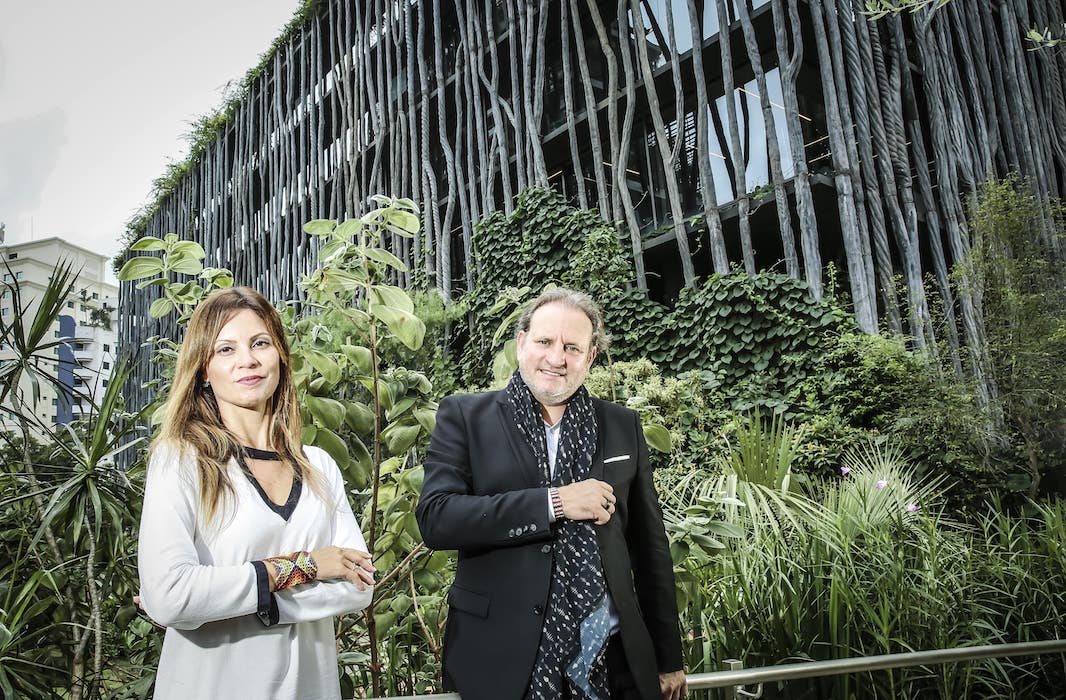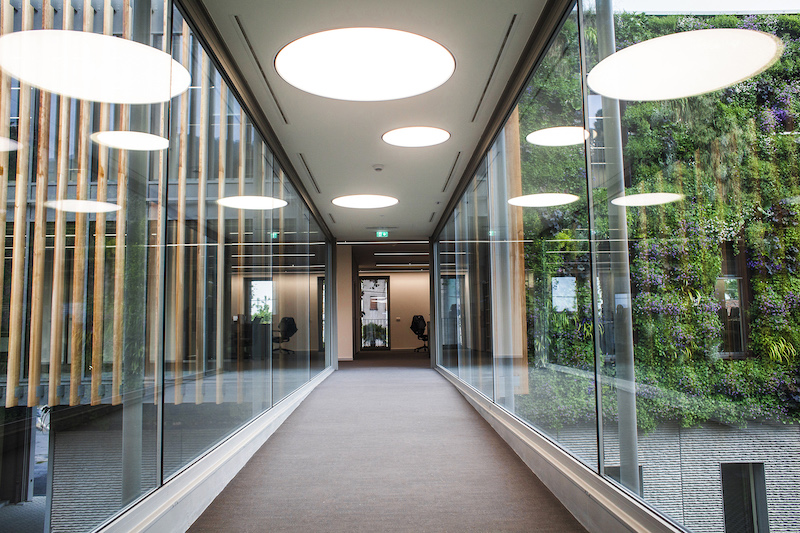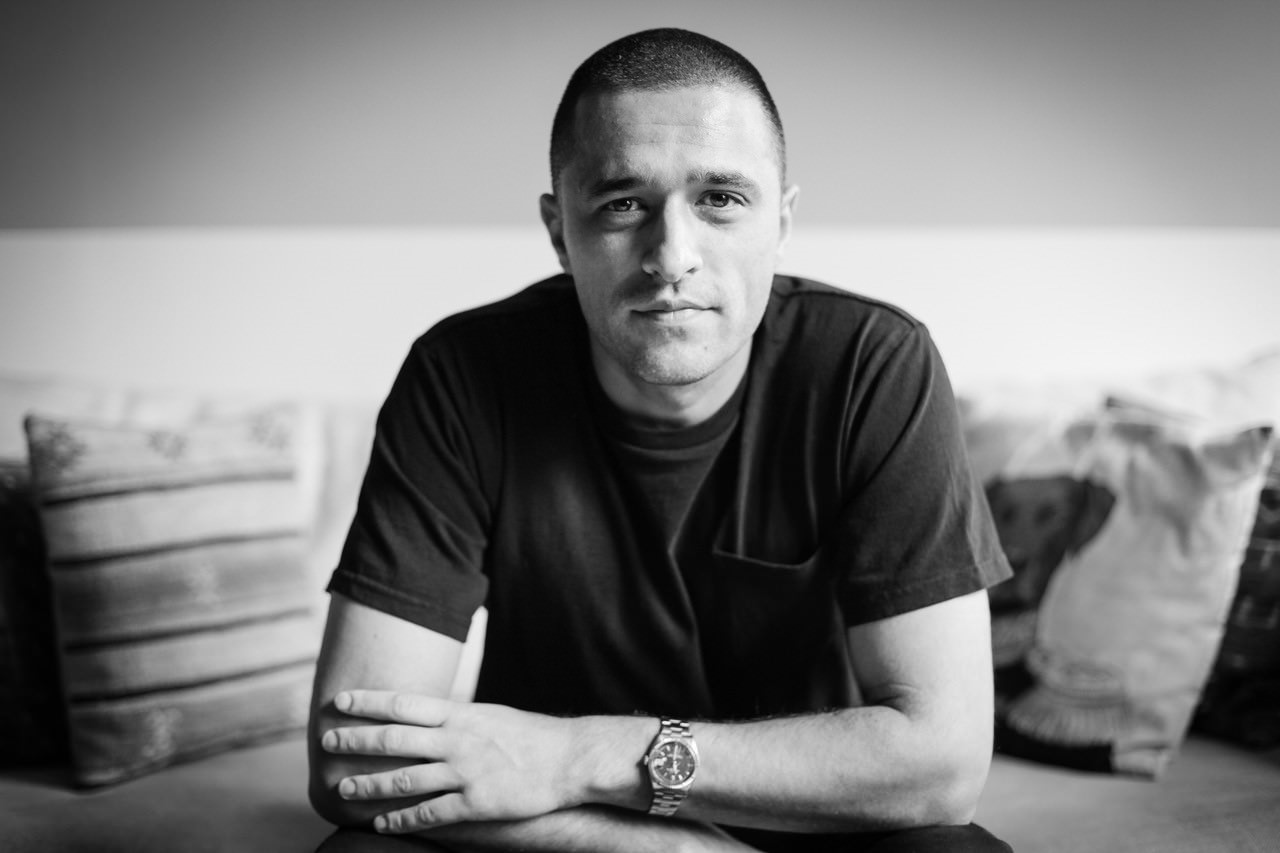Jimmy Nelson gained international renown in 2013 with the publication of his photography book Before They Pass Away, in which he captured people living in some of the most remote parts of the world. His passion for photographing indigenous cultures is the result of a lifetime of searching—for his own identity, for understanding of human nature, and from the desire to connect. After the publication in 2018 of his second book, Homage to Humanity, Nelson is endeavoring to reach as many people as possible through future internationally touring exhibitions and installations. He is a self-described romantic, and his portraits are meant to inspire us through undeniable, heart-stopping beauty.
Oskar Metsavaht—the physician, artist, and designer behind the Brazil-based fashion company Osklen—has been advocating for a sustainable business model for years. Deeply connected to the Brazilian Amazon, he has visited indigenous cultures to learn from their rituals, spirituality, and relationship with nature. His artistic practice draws attention to social and ecological issues, such as how illegal gold mining is polluting rivers in Brazilian rainforests, as well as the regions’ remote communities.
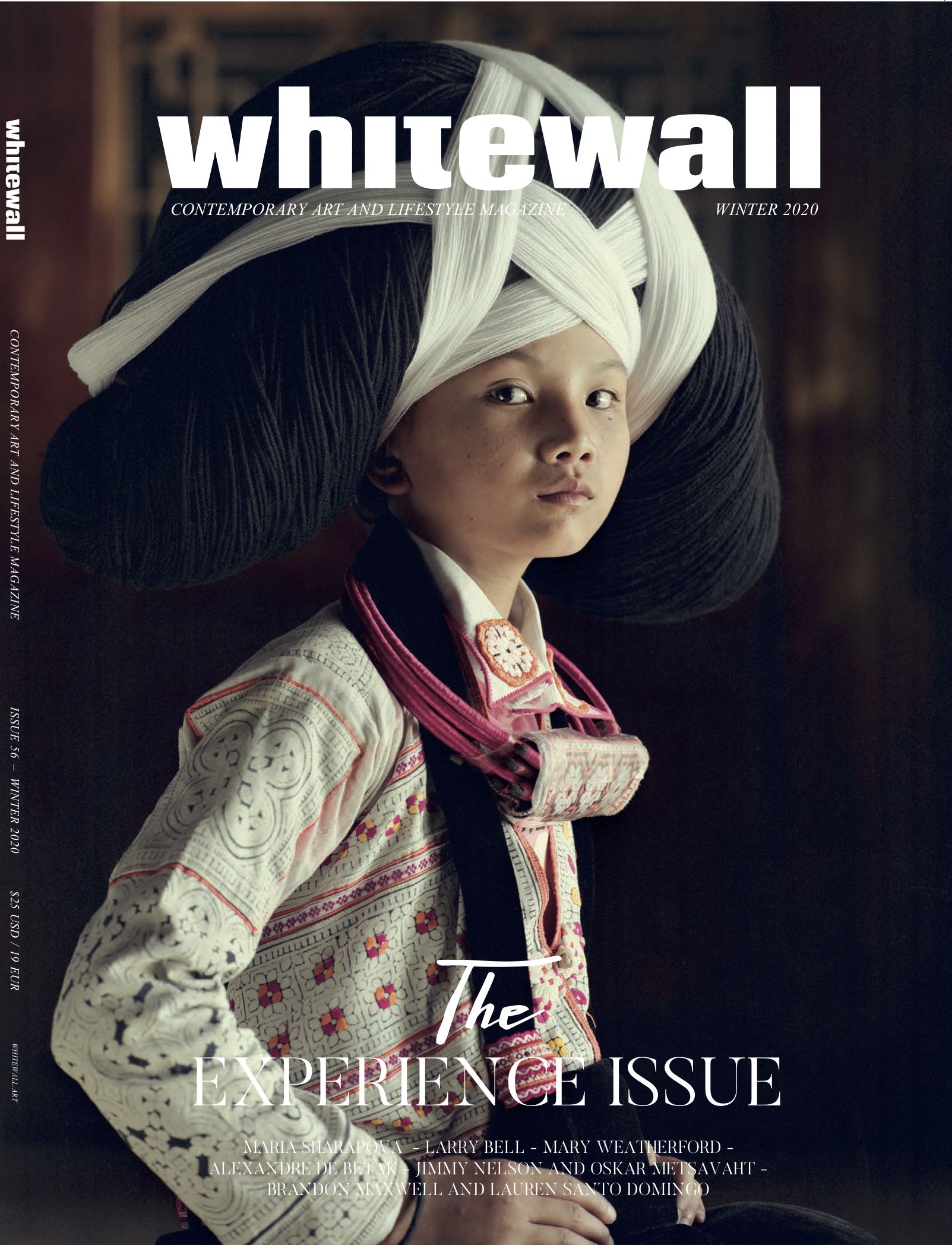
Whitewall’s winter 2020 Experience Issue, featuring Jimmy Nelson.
Whitewall recently invited Metsavaht and Nelson to speak with one another. In conversation for the first time, they discovered a shared passion for inspiring concern, action, and, ultimately, change through the power and spirit of art.
OSKAR METSAVAHT: What are you working on right now?
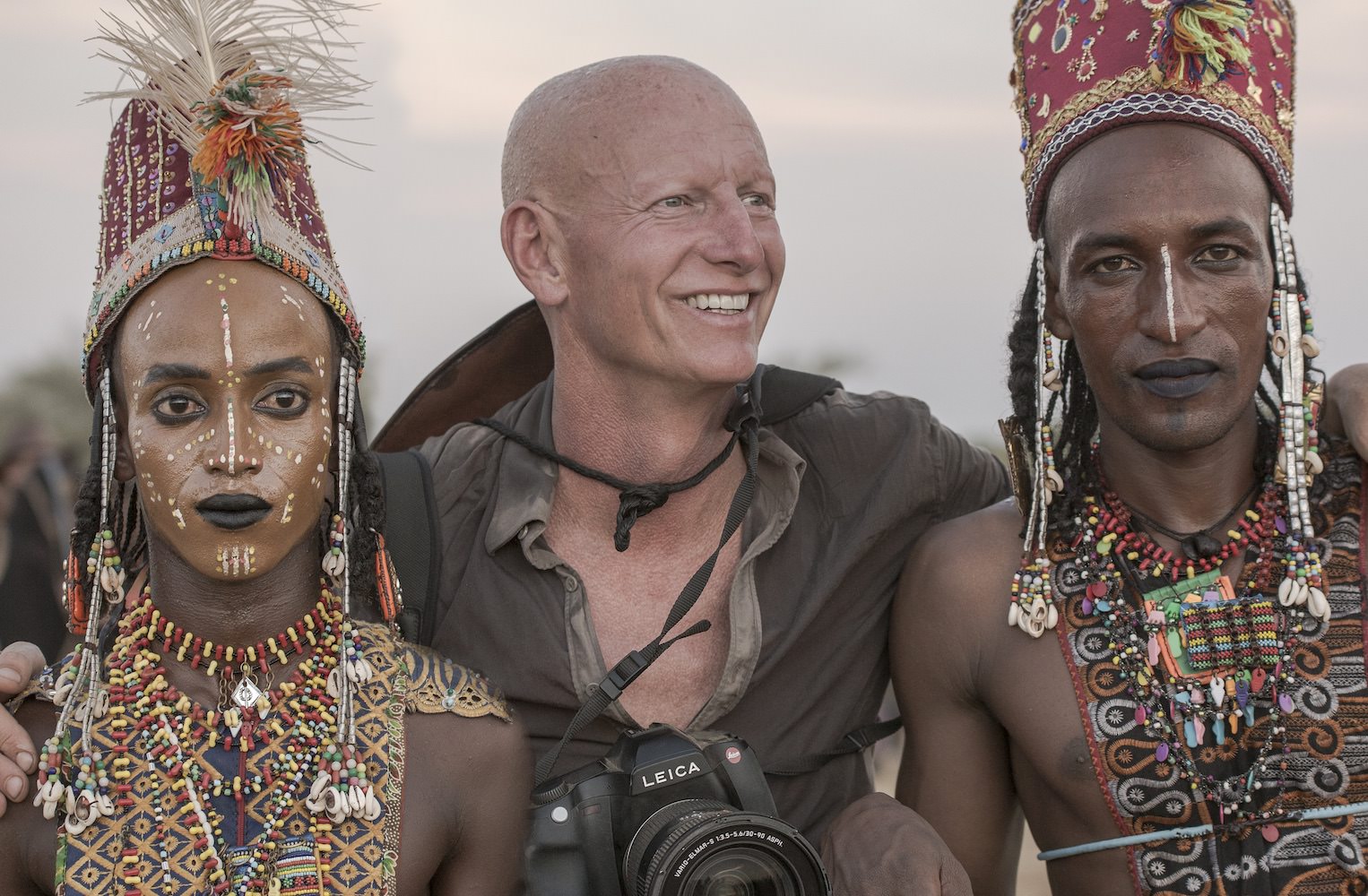
Courtesy of Jimmy Nelson.
JIMMY NELSON: I’m leaving the relatively narrow confines of photography, and I’m trying to take the message to a higher level. I’m revisiting and meeting more indigenous groups, photographing them with a 10-by-8 plate film camera. I’m making one picture, one definitive moment, one moment of connection with each group.
And then we’re filming where we are with 360-degree cameras, recording sound, smell, so that in a few years’ time, we will have installations that are immersive. You will be enveloped by 360-degree footage with sound, smell, and the definitive, iconic image shot on a 10-by-8 camera will hang on the wall. These will be sold eventually to facilitate the funding of the project with the negative. So they will be unique images.
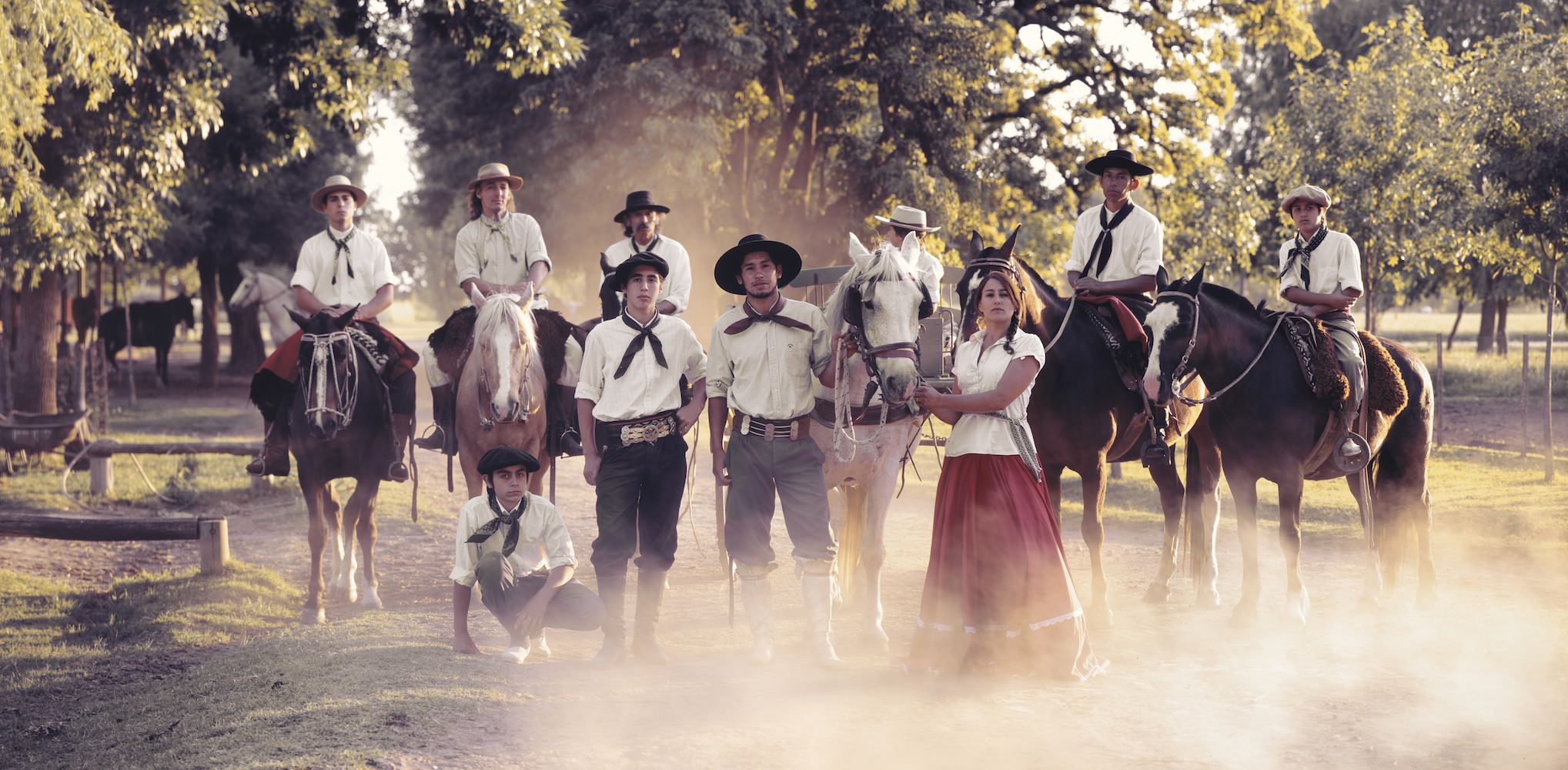
Photo by Jimmy Nelson.
OM: It’s a great concept.
JN: It’s an ambitious concept. I’m at my physical, mental, emotional, and creative limit. But it will happen, and it’s highly thrilling. It’s mind-bogglingly fulfilling because when you have to invest so much creative physical and emotional input to carry this camera, install it in some of the remotest parts of the planet, and then persuade people you can’t verbally talk to that they need to stand still under waterfalls, for periods of up to five seconds, it empties you. But at the same time, it fills you up with the most rewarding creative experience of connection that you could ever imagine.
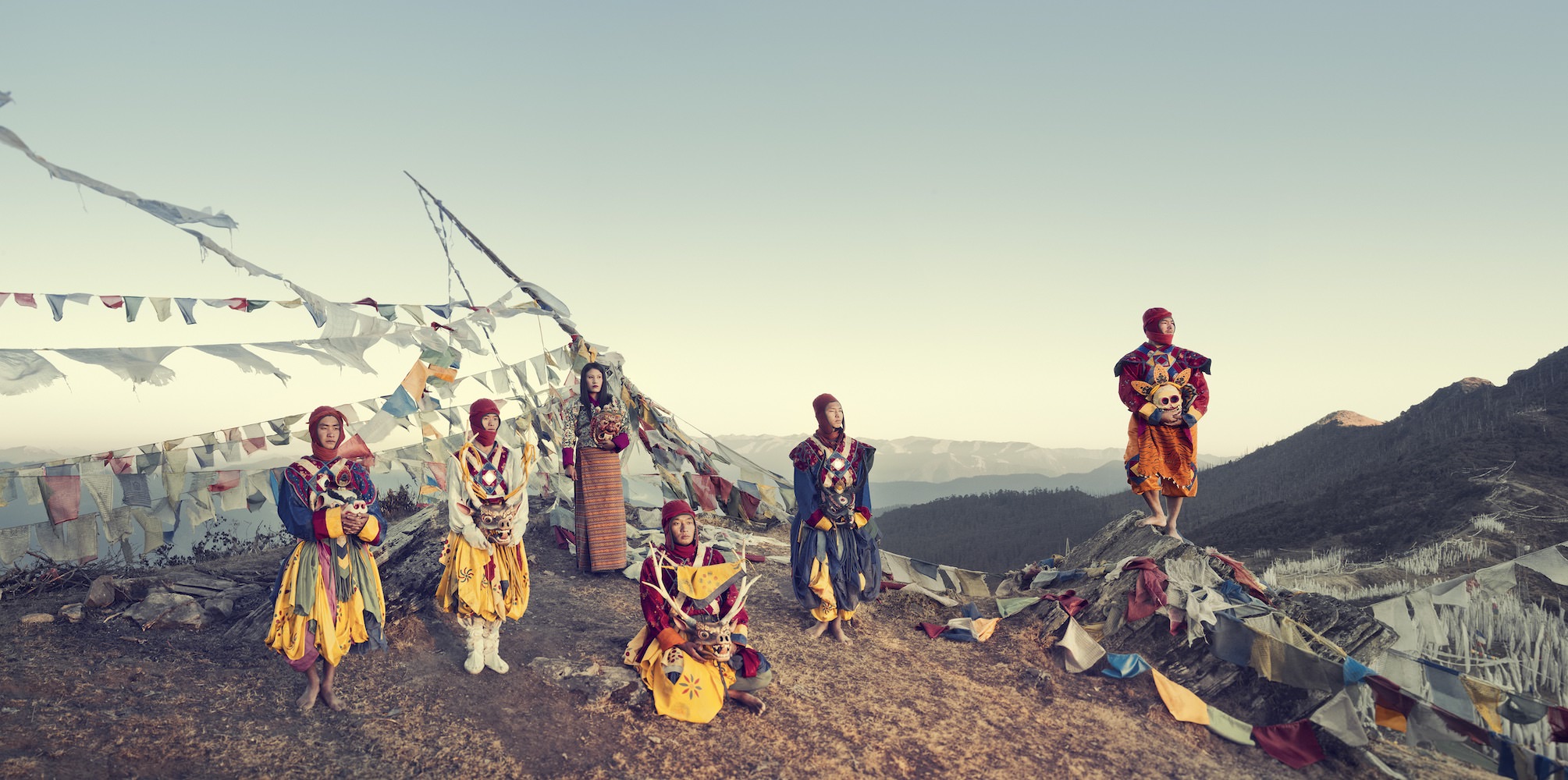
Photo by Jimmy Nelson.
OM: I’d say you almost capture a real spirituality.
JN: I’m trying. I don’t think I’ve truly succeeded yet. What I’m aspiring to do now will raise the standard. I think it could be possible to get closer to truly capturing that spirit, to share a broader global message to the validity of these groups and how important they are to us in the developed world.
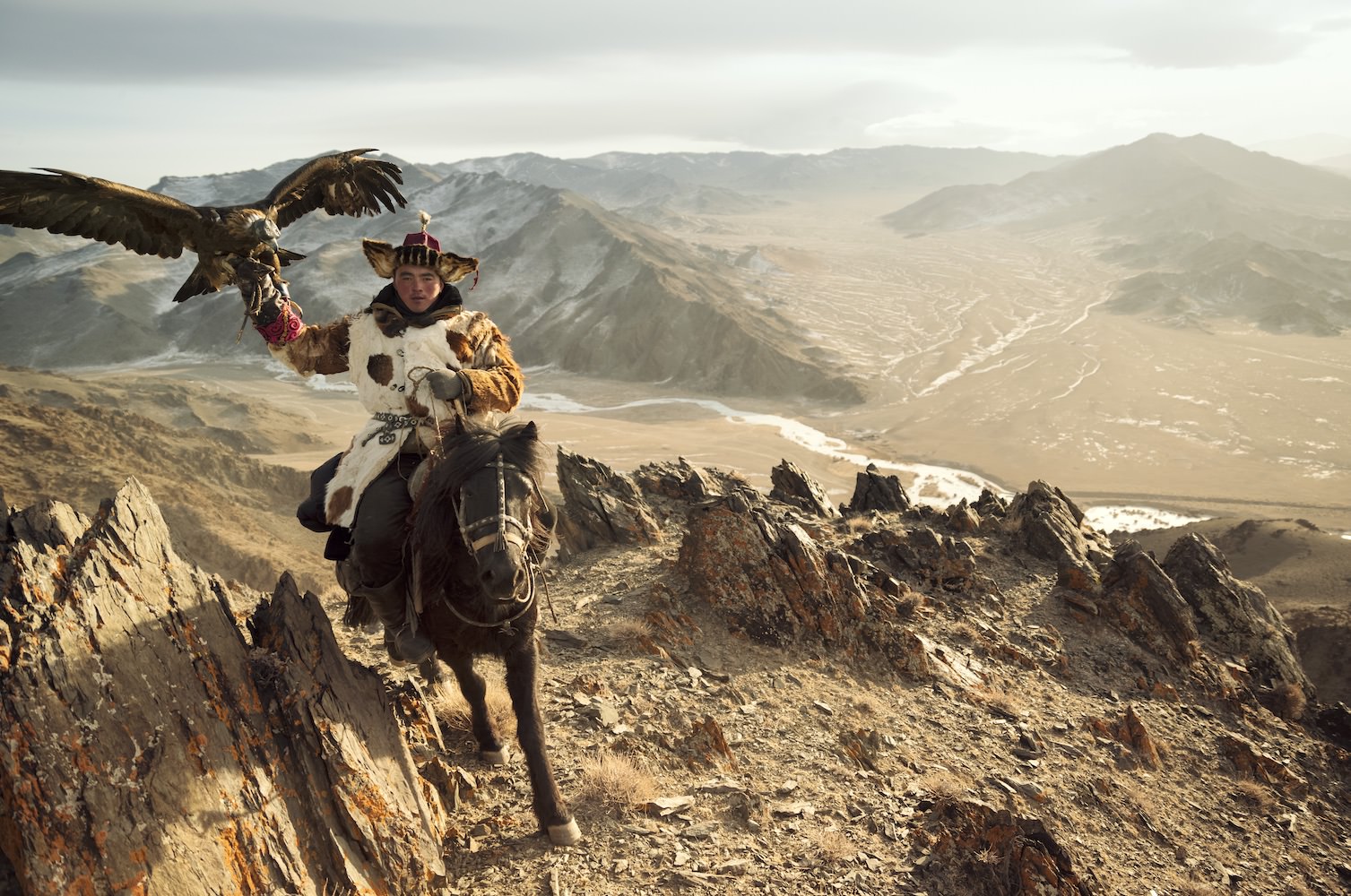
Photo by Jimmy Nelson.
OM: One of your books is titled Before They Pass Away. This phrase touches everybody. It doesn’t matter if they are art appreciators. Your photographs bring an intimacy. The strength of your portraits and this statement, it’s incredible.
JN: Thank you. It’s a lifelong passion. I’ve been doing it since I was a child. And it is now beginning to resonate globally. We are beginning to feel very fragile in the developed world. We are beginning to panic. We’ve started to realize we are influencing Mother Earth. We’ve forgotten to truly investigate who we are as human beings, and it’s we who are making the changes. It’s we who are altering everything. I scream to the world with the portraits and the landscapes—these subjective, very romantic images. It’s an artistic scream; it’s not an anthropological scream. If we don’t wake up, we will lose the wisdom and insights into the truly magnificent knowledge of how it is to live as a human being with the natural world.
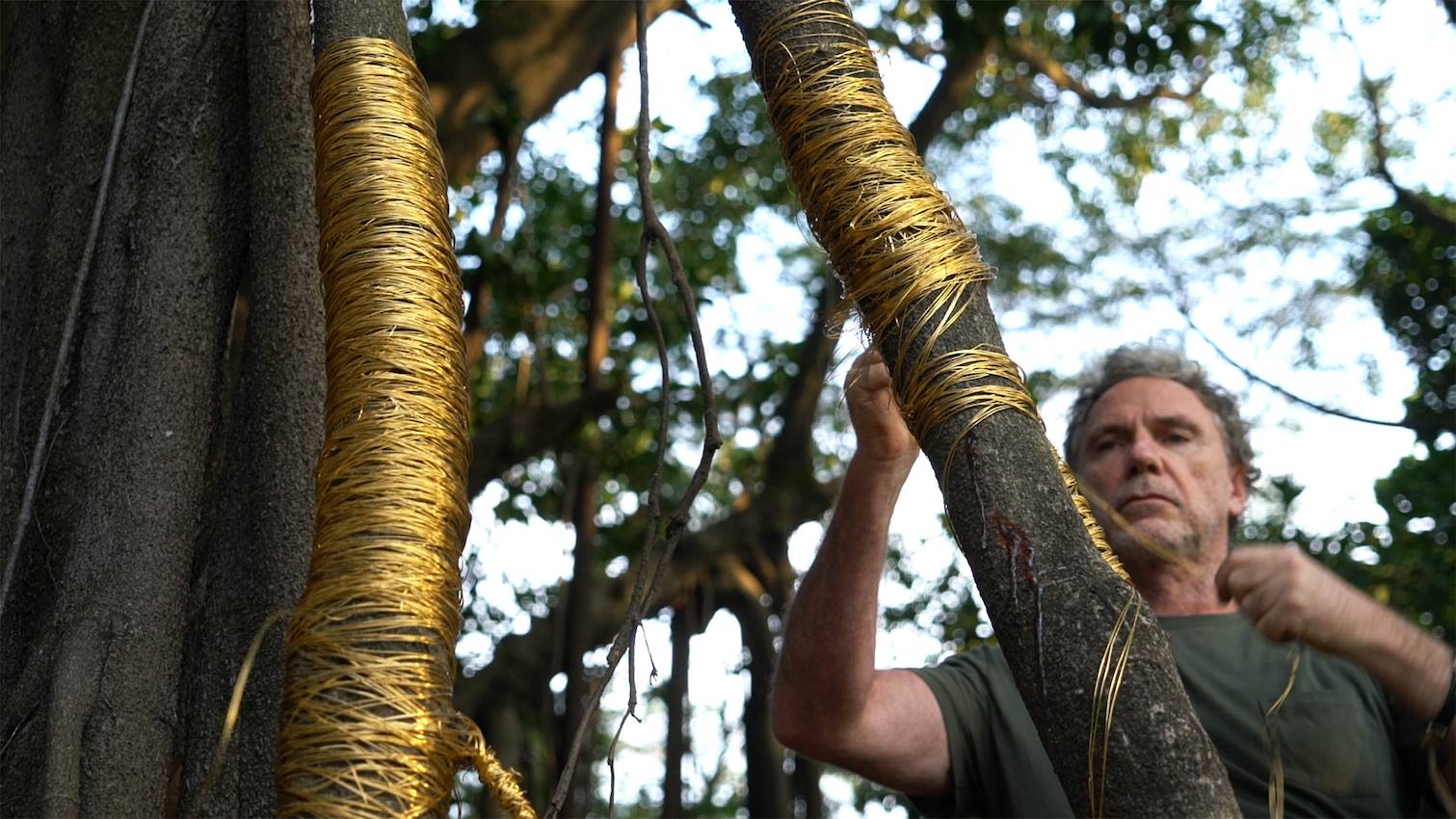
Oskar Metsavaht.
OM: When we do these kinds of projects, people ask, “How do you think you’re helping them? I say, “No, they are going to help us.”
NJ: You’re right. They can perhaps guide us into the future. Traditionally, photography has been very patronizing to indigenous cultures. I’m inverting it and I’m giving them the status, the power, the dignity we give ourselves in the developed world. What I’m communicating is an inspiring truth, is a romantic truth, is an artistic truth.
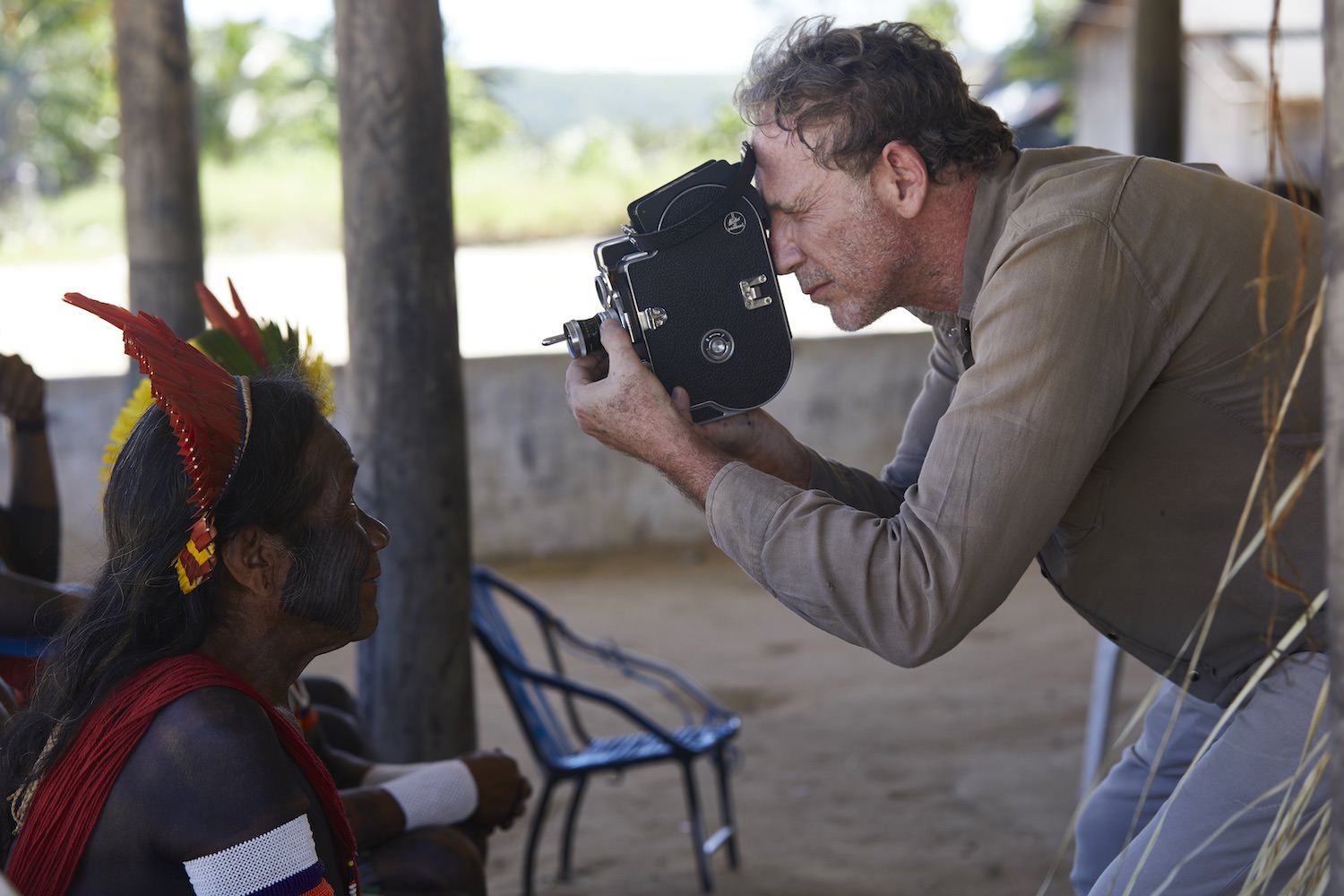
Oskar Metsavaht.
OM: I’m not a photographer, but I use the viewfinder to focus myself into the tales of others.
I use photographs to get some fragments of memory of an experience.
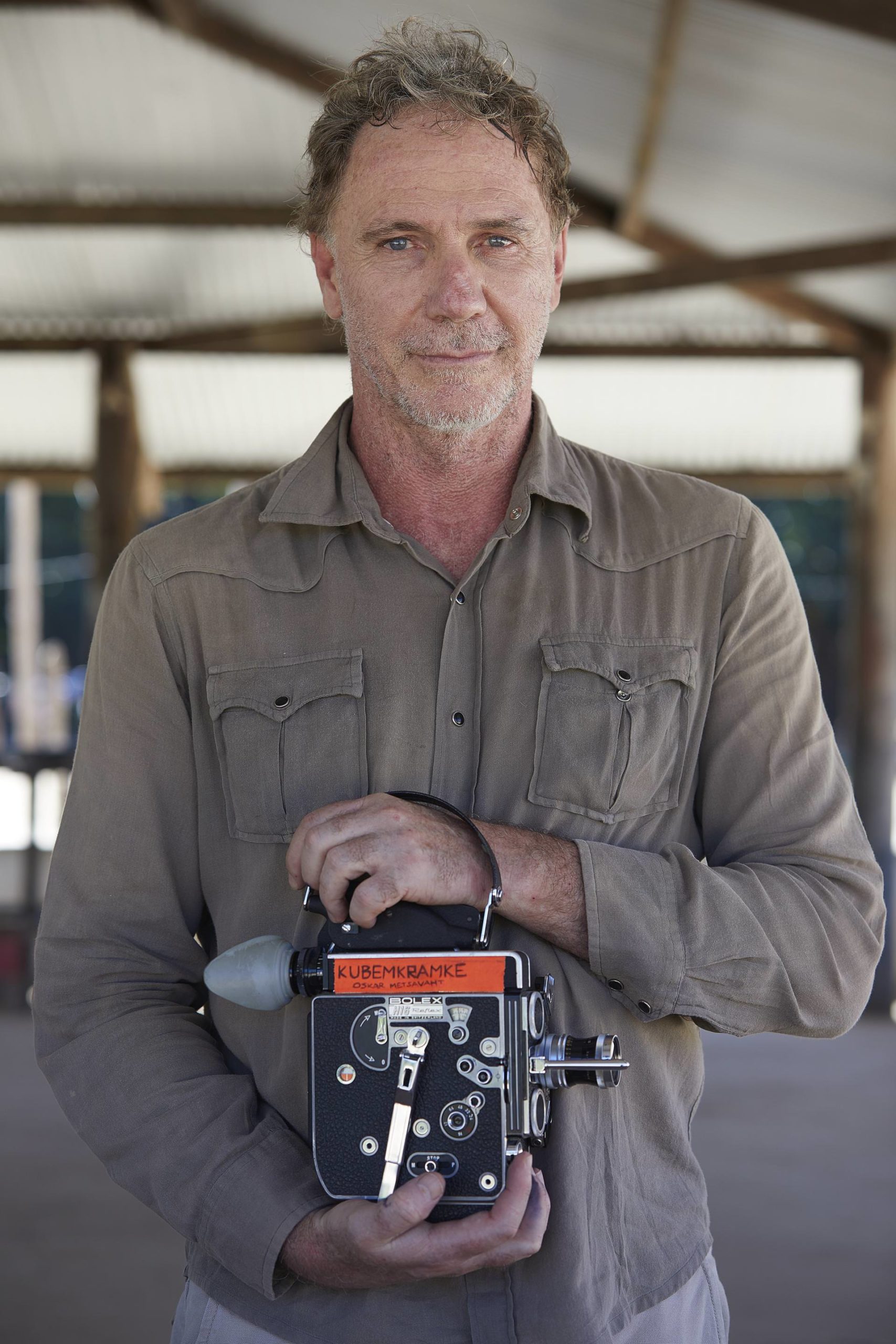
Oskar Metsavaht.
JN: I’m not interested in photography either. I’m interested in connection.
OM: I was visiting some indigenous people in the Amazon before the fires. We can learn the sensibility, respect, and rituals of their day-to-day, the way they live with the nature. Their spirituality and their culture come from the forest, rivers, animals, and the cosmos.
It’s a great opportunity for us. I think in the world we live in now, we have so much visual iconography, especially in this digital moment. There is so much information. I think we are becoming very fragmented from our inner selves.
In my work as an artist, I try to be as close as we can to our primitive spirituality and personality. The first thing we perceive as humans is the sun—its light, its warmth. It was our first understanding of divinity. We have always perceived a cosmic sense of the symbols around us, understanding our life from nature.
But today we are so far from that. Indigenous peoples live with nature in a way we are so far from. So, for those who have this experience, as you have, to be in those remote places, going through their rituals, you understand this.
When I visit, I use photographs and film to capture those fragments of magic moments, to help me. I invite the spectator to share in my metaphysical experiences. And I make paintings that are the synthesis of this experience. I’m not a painter or filmmaker. It’s just the way I get to share my experience with others.
JN: We are in many ways trying to communicate the same emotional experience.
I’m very deeply connected with what I need to feel alive. I was very brutally and radically taken out of that safety as a child due to sexual abuse by priests. Then I disconnected from my emotions, every way that you can imagine. I had a little voice that said, “You have to find a way to reconnect because you will not survive, you cannot live this life without feeling. You can’t live this life without passion.” The organic evolution was to use the camera to get as close as possible to these natural and human experiences as a way of finding my salvation.
The more complicated I make the process, the more layers I need to apply, the larger the format of the camera, the more difficult the circumstances, the closer I get to that salvation.
And then I realized you need to share it. But also, you cannot scare. It’s very, very easy to scare an audience away from this thing. It’s a very complicated thing. It’s a thing that’s very far removed from the developed world. This is not about control. This is about serendipity. This is about something that’s untenable. But I’m translating that to make it palatable, to make it accessible, to make it understandable and not alienate an audience. And it resonates with a very, very simple emotion of beauty.
To confront people with something that’s so beautiful, no matter how far away, it touches something in their heart, and they have to find more. Then, we as artists become a catalyst to dig deeper and start finding their own language to better understand what we’re trying to show.
OM: I completely agree. This experience is about saying no to all these images you have now, break the dogmas, break constructed elements, and go experience for yourself divine contemplation. Understand the meaning of life from nature and build your own symbols.
JN: How do you communicate that to others? That’s the real art. And that’s what I find fascinating. And that’s what pushes me to have this very bipolar existence of not just disappearing into this remote and indigenous world, but to continually come back to the other side. To redress this balance, because the easiest option would be just to close the door behind me and disappear. But the real mission is how can we keep that experience alive. Keep it objective, keep it focused, but at the same time keep sharing it in a palatable way.
OM: Art can bring a message and inspire. Our society needs artist philosophers. We are in dangerous times. We’re so vulnerable now. Artists, in a way, are angels. We have to help what’s happening on our planet.
JN: That’s why what I make is deliberately not complicated and unapologetically romantic.
OM: From the word “ethos” in Greek comes two words: “ethics” and “aesthetics.” So ethics is equal to aesthetics.
JN: Interesting.
OM: Beauty helps us. We are living in a new Renaissance. There is a great technological paradigm shift. As with the previous Renaissance, with this change in perspective, we became more human. We are living in crisis times, but as in the Renaissance, with science, philosophy, and art together, human beings can help. I’m an optimist. I’m a romantic.
JN: I am, too.
OM: I’m very happy to be living in this generation. Our generation could change the mindset of human beings. We understand what’s going on with the planet scientifically, and we can communicate what’s going on in our spirit and mind. We are capable of saving the planet. We have the technology and methodology for a sustainable world.
JN: With this deep, connected storytelling, maybe you can inspire a whole new generation to have a better understanding of it, interest, less judgment, curiosity, hunger, and need to inquire about the natural world and these indigenous communities.
There is a lot of positivity—it just has to be used in the right way. There are wonderful things happening. It’s just how we use them that’s the issue.
I’m not standing up waving a finger, shouting statistics, and waving said intellectual propaganda and scaremongering. I’m trying to get deep into the soul, into the heart of somebody.
OM: That’s the spirit of art.




